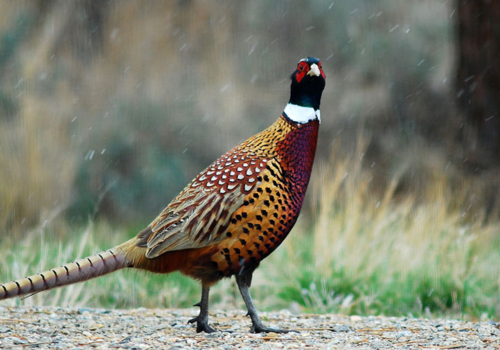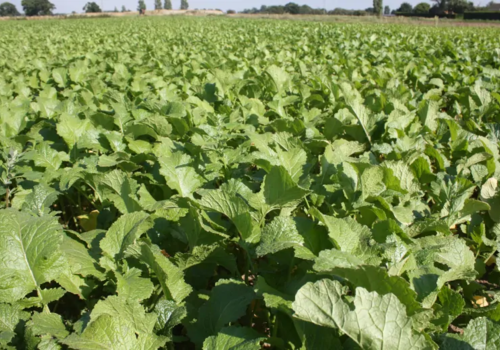When planting vegetable crops, one of the most effective ways to improve soil health and promote sustainable gardening is through the use of Cover Crops. Cover crops are plants grown primarily to benefit the soil, rather than for harvesting. They help prevent soil erosion, suppress weeds, and improve soil fertility.
What are Cover Crops?
Cover crops, also known as green manures, are typically fast-growing plants that are sown between vegetable growing seasons or alongside crops to enhance soil health. Popular types of cover crops include clover, mustard, vetch, and rye. These plants are generally used to add organic matter to the soil, fix nitrogen, and prevent weeds. Some cover crops, such as legumes, can even improve soil nitrogen levels, which benefits subsequent vegetable crops.
Here in the UK, where weather can be unpredictable, and the growing season is often shorter, cover crops are an invaluable tool in the arable farmer’s toolkit. They can be grown in various ways, but the key question remains: can you plant them alongside your vegetables?
Benefits of Planting Cover Crops with Vegetables
The idea of planting cover crops with vegetables is not only viable but also beneficial for multiple reasons. One of the main benefits is that cover crops can protect and enhance the soil in between vegetable growing cycles. For instance, planting a fast-growing cover crop in the autumn, such as winter rye or mustard, can help to suppress winter weeds and protect the soil from erosion. This is especially important in the UK, where heavy rains during the winter can lead to soil degradation.
Cover crops can also add nutrients back into the soil. Legumes like clover fix nitrogen in the soil, a nutrient that is essential for the healthy growth of vegetables. These cover crops can be used in rotation with vegetable crops, ensuring that soil fertility is maintained without the need for artificial fertilisers.
Furthermore, cover crops help increase biodiversity. Many cover crops attract beneficial insects and pollinators, which can benefit vegetable plants by encouraging natural pest control. For example, mustard attracts beneficial insects like ladybirds, which are natural predators of aphids.
How to Grow Cover Crops with Vegetables
The success of planting cover crops with vegetables depends on timing and selection. Ways to grow cover crops with vegetables include:
• Intercropping - this involves planting cover crops between rows of vegetables. For example, you might plant a low-growing cover crop like clover between rows of leafy greens. These plants will not compete heavily with the vegetables for resources but will still protect the soil and provide other benefits.
• Sequential Planting - if you are growing vegetables that have a long harvest window, such as tomatoes or leeks, you might plant a cover crop after the vegetables are harvested. For instance, after you harvest your beans, you could plant a cover crop of mustard to help control soil-borne diseases and add organic matter to the soil before the next planting season.
• Cover Crop in Between Seasons - during the winter months, when vegetable growth slows down in the UK, you can plant winter cover crops to protect the soil. Winter rye, for example, can be sown in late autumn and left to grow through the winter. When spring arrives, you can till the rye back into the soil to provide a nutrient boost before planting spring vegetables.
Choosing the Right Cover Crops
As the weather in the UK is often cool and wet, selecting the right cover crop is key to success. Some recommended cover crops include:
• Winter Rye – our Forage Rye Seed is a hardy cover crop that grows well in the colder months and provides excellent ground cover. It also has deep roots that help break up compacted soil.
• Mustard – Brown Mustard Seeds grow quickly and work well as a weed suppressant. Also effective at managing soil-borne diseases like clubroot.
• Vetch and Clover – Vetch and Clover, both legumes, are excellent for fixing nitrogen in the soil, benefiting vegetable crops by improving soil fertility.
Things to Avoid with Cover Crops
While planting cover crops alongside vegetables undoubtedly provides the benefits outlined above, efficient management is essential if the following considerations are to be avoided:
• Cover crops can sometimes compete with vegetables for nutrients and water if not managed properly. It's therefore crucial to choose the right variety and planting time to ensure that the cover crop complements the vegetable plants rather than hinders their growth.
• Another challenge is the potential for cover crops to become too aggressive and to overwhelm vegetable plants. Some species, like mustard, can grow rapidly and shade out vegetables if not managed properly.
Cover Crops from Boston Seeds
In the UK, planting cover crops with vegetables can be an incredibly effective and sustainable practice. By choosing the right cover crops and managing them properly, farmers can improve soil health, increase biodiversity, and even boost vegetable yields. Whether intercropping or using cover crops in between growing seasons, these plants can play a vital role in maintaining a thriving crop while minimising the need for synthetic fertilisers and pesticides. With careful planning and attention, you can certainly plant cover crops with vegetables and reap the benefits of a healthier, more productive ground.
At Boston Seeds, we have been conducting extensive research and development trials to select the most effective varieties and mixtures of cover crops that we have been supplying to British farmers for over 10 years. Our seed is produced here in the UK, or sourced directly from Europe.
To find out more, get in touch with our experts by email or phone on 01205 280069, or request a catalogue to browse our full range.

